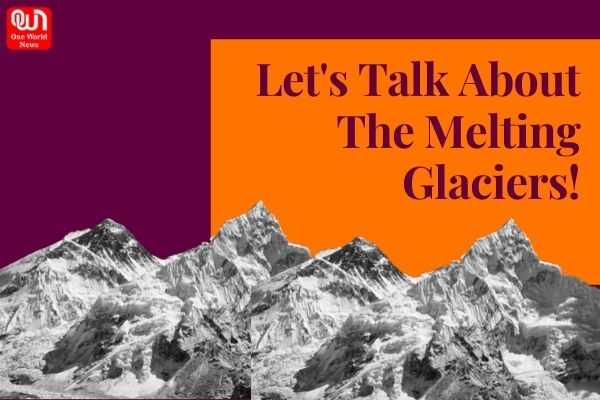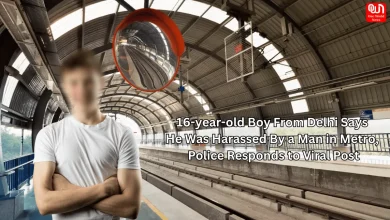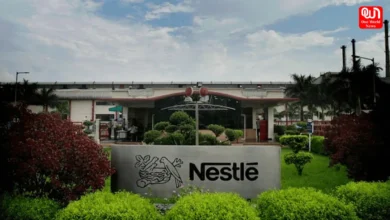
The World’s Glaciers Are At The Severe Vulnerability Of Extinction
Uttarakhand’s nature furry last week attracted the attention of several climate change activists, celebrities, scientists and politicians. So far, 58 bodies have been recovered and the search operation for some 146 missing people is still underway.
On February 7, a part of the Nanda Devi glacier broke off, which caused heavy flooding in Uttarakhand. It was the biggest disaster after the 2013 Uttarakhand flood that raised some serious concerns for the Himalayan region. The cause of the glacier burst is being probed, however, some experts believe that global warming might have not triggered the cause. The recent preliminary observations of experts believe that a hanging glacier broke off and fell from 5,600 metres altitude and this caused the disaster in Uttarakhand.
Farooq Azam, who is an Assistant Professor at IIT Indore, told IANS in an interview that the Nanda Devi glacier did not burst.
“There is no terminology in science like ‘glacier burst’. But we believe that there was a hanging glacier which slipped with rock and ice falling from 5,600 metres altitude,” he said.
However, he added that the breaking off the peak might have caused due to climate-driven factors.
The Nanda Devi tragedy might be from a natural cause, but it doesn’t mean that we are safe. The Himalayan glaciers are melting way faster than the scientists previously thought. And not only the mountain glaciers are at risk, but the alpine glaciers too. The melting glaciers can cause more frequent and adverse flooding, sea-level rise, and mass destruction in the future. The reason that we need to worry is that not so many people are aware of the climate crisis. People don’t understand climate change, they don’t understand what causes it, they don’t understand how it affects us and how it can be stopped. Education on the environment is more important than education on sex.
Global Warming Is Melting Our Glaciers Six Times Faster Now
In the 21st century, denying the climate crisis and global warming would be the dumbest thing to do. Since the past century, climate change has affected our environment severely, and the glaciers are at the highest vulnerability. Glacial ice covers around one-tenth of the Earth’s surface, and they are melting at an alarming rate. The primary factors that promote glaciers to melt are human activities. After the industrial revolution, the rise of carbon dioxide and other greenhouse gas accelerated, causing glaciers to melt faster. Study finds that if the global temperature rises with the current pace, the earth would lose one-third of the remaining glaciers before 2030. The studies have found that the Himalayas, Greenland, and Antarctica are losing their ice faster than previously thought.
The Himalayas Might Lose Its Ice By 2050
The Himalayas are the most exotic and iconic mountain range on the land. It has the widest mountain belt and the highest mountain peak. The Himalayas feed some 2 billion people in South Asia by providing them with water, land, and jobs. But the recent studies have found that all these lives are in dire danger. A study published in the International Centre for Integrated Mountain Development cites that one-third to two-thirds of the Himalayan region, which is around 56,000 glaciers, will disappear by 2100. The melting Himalayan glaciers are creating hundreds of new lakes. From 1990 to 2010, roughly 900 new lakes were formed by the melting glaciers of the Himalayas. These lakes are not just the signs of melting ice, but the signs for future disasters. These lakes can cause huge flooding or glacial lake outburst flood (GLOF), such as in 2013 Uttarakhand’s tragedy.
In 1985, in the Khumbu region of Nepal, such GLOF created over 20 feet high waves that released more than 1.3 billion gallons of water and destroyed 14 bridges, about 30 houses, and killed several people. The formation of these lakes is a sign of worries to many locals, governments and scientists. They can cause more GLOF in future.
The Himalayas are considered one of the world’s most sensitive hotspots to climate change and global warming. Over a billion people directly rely on the Himalayas for food, water, jobs and electricity. Also, the Himalayan glaciers are the water towers of two world’s greatest rivers: The Ganga and the Yangtze. The melting of the Himalayan glaciers is the greatest threat to the people, biodiversity and plant and other species relying on these rivers. The melting of the ice can trigger frequent flooding in the Ganga and other rivers and cause significant damage to lives, agriculture and biodiversity.
The Indian Himalayan region is one of the most affected regions of the greatest mountain belt. The glaciers in the Garhwal Himalayas are believed to be practically gone by 2035.
A study by IIT Kanpur and Dehradun-based Wadia Institute of Himalayan Geology reports that roughly 26 square kilometres of the glacier of the Nanda Devi region were lost since 1980.
Global Warming Impacts On The Global Ice Sheets
The findings, published in the journal Nature (supported by NASA and the European Space Agency), reveal that Greenland and Antarctica have lost 6.4 trillion tons of ice since the 1990s, which is 6 times faster than the 90s observation. The findings say that Antarctica and Greenland have lost 475 billion tons of ice per year in the 2010s, which was 81 billion tons per year in the 1990s.
The famous Kilimajaro has lost its 80 percent ice since 1992, and experts believe that the ice will be gone by 2033.
Marmolada glacier, famously known as the Queen of the Dolomites Glaciers, is likely to disappear within 15 years. A team of scientists warned that one of Italy’s most famous and iconic glaciers will be lost by 2031 because of global warming.
The worst-hit region in the Arctic. The Arctic is losing a cube of significant ice at a rate of almost 13% per decade. Studies suggest that the Arctic could be ice-free in the summer by 2040. It is warming faster than any other parts of the world.
The Melting Glaciers Can Wipe Out Half Of The World
If Antarctica alone melts down completely, half of the world would be submerged under the water. The rise in sea levels will wipe out Venice, Miami, New York, Mumbai, Chennai, Kolkata, Florida, Buenos Aires, coastal Uruguay, London, 600 million Chinese, entire Bangladesh and almost half of the world from earth’s map.
A study published in the journal Scientific Reports reports that climate change could increase the coastal flooding by 2021, which would cost $14.2 trillion. According to the study, about 148 million people globally are exposed to flooding events today. The world needs to meet the Paris climate guidelines and keep the global temperature rise below 2℃. If the current scenario of greenhouse emission continues, it would be difficult to control the global temperature rise below 2°C. Studies find that global temperature will possibly be 1.8°C warmer by the end of the century. And if so, 54 million people will be exposed.
Every centimetre of sea-level rise means about a million people will be displaced. A study by the Journal Scientific Reports that the rising sea levels would claim an extra 23 million lives by 2050. Not only this, the melting ice sheet means more heat will be absorbed by the earth’s surface. The glaciers work as reflectors that reflect the sun’s heat back to space. If the ice sheets meltdown, the earth will start absorbing more heat, which means the Earth’s temperature will rise rapidly. The glaciers work as the reflectors for the earth to prevent it from the Sun’s heat. The ice sheets help the earth in maintaining the heat balance. It is helping Earth to maintain its normal temperature and preventing global warming.
If the world glaciers melt, people would face massive floodings, sea levels rise, displacement from their homes, loss of habitat and biodiversity, huge economic loss, and hundreds of thousands of deaths.
What You Can Do To Stop Climate Change?
When we ask people about countering the climate crisis, the most common answer we hear is that they don’t have the power. The big industrialists, administrations and the politicians have the power. But are these claims true?
We need to understand that the people have more power than the authorities, and the consumers have more potential than the producers. Just look around you when you visit your regular supermarket next time. You can find more plastic bottles than glass jars. The honey plastic squeeze bottles have replaced the jars, the plastic packets of tomato ketchup have replaced the old glass bottles, and so on. This happened because we chose them. No wonder why the world is producing more plastic each year than the previous ones.
The world has currently over a billion cars on the road, and an estimated number could go double by 2035. And by 2050, there would be over 3 billion cars on the road. More than 95 percent of those cars run on fuel, which could be reduced to as low as 50 percent by 2040. EVs might take over the 50 percent share of all the cars in the future.
The demand for meat has gone up in the past decade, and by 2050, it can rise by as much as 76 percent. There are more animals on earth than humans to fulfil meat demand, which is one of the major causes of greenhouse gases. The livestock emits more greenhouse gases than the rest of the planet and consumes more food than humans.
No matter who remains in the authority, the public holds the ultimate power. You cut down the meat intake, plastic use and fuel cars, the world can be changed. You start protesting against the government’s anti-environment laws, the government will have to hold them back.
Start with the small things. Buy less plastic, burn less fuel, consume minimum meat, and ask your schools, office management and government and municipals to focus on more sustainable changes. Use natural lights and switch off the bulbs, use bicycles more than cars or motorbikes, eat local rather than ordering online, use public transport to commute to work or ask your organization to start the cab services, always try carpool.
You can even raise funds for your schools, colleges, and offices to install the solar panels. Always try to recycle, up-cycle and reuse the old products. Use a bicycle to go to school or to the nearest metro station. Always try to buy things from your local stores rather than ordering online. These small steps can bring a lot of changes and save the planet from dying.
Have a news story, an interesting write-up or simply a suggestion? Write to us at info@oneworldnews.com








